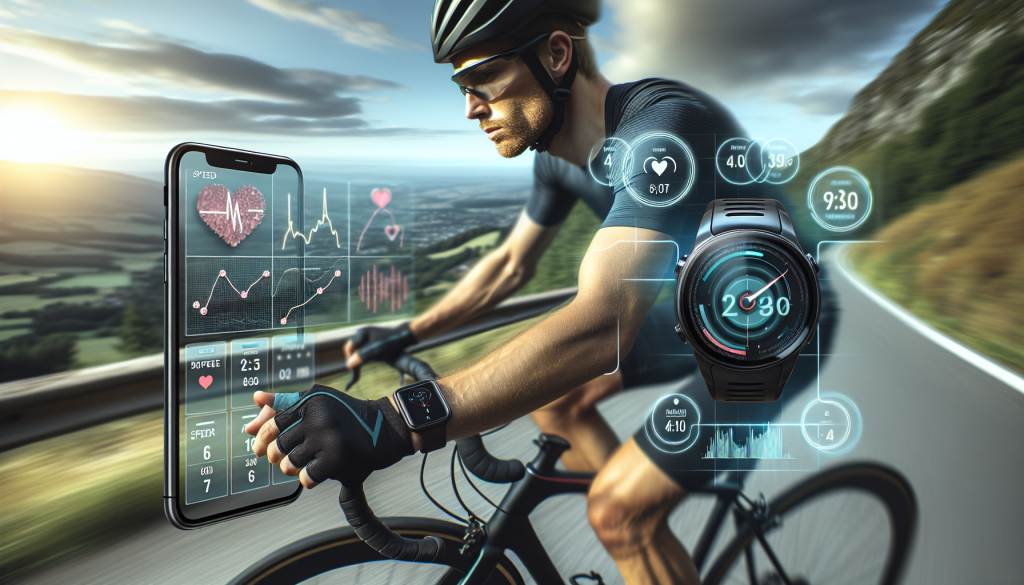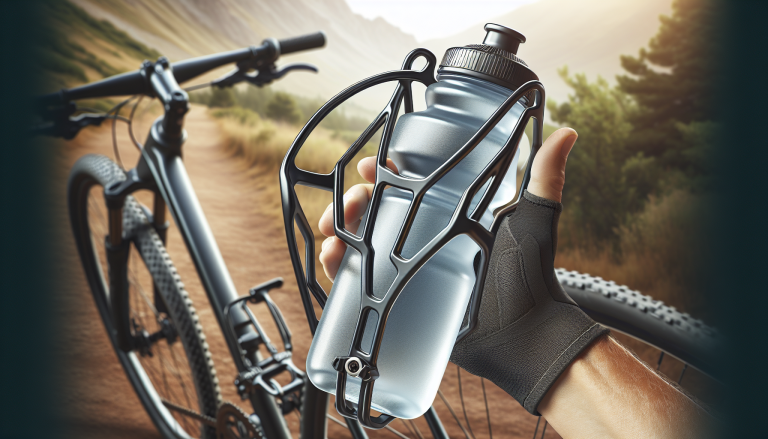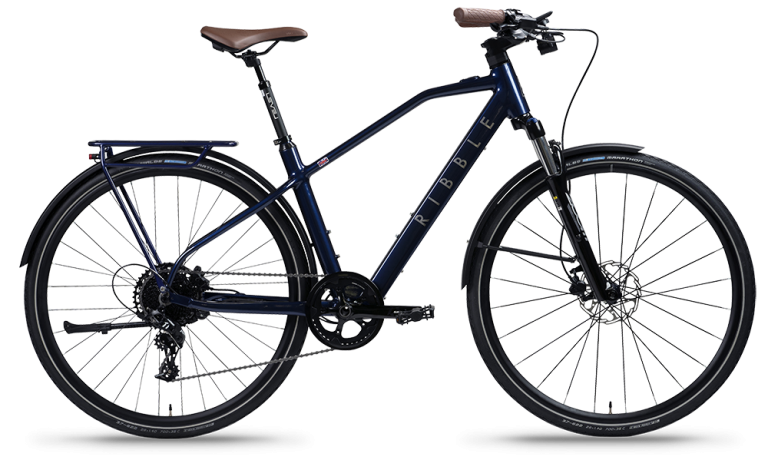Are you an avid cyclist looking to improve your performance on the bike? If so, then knowing how to measure and record your cycling performance is essential. In this article, we will explore the various ways you can track your progress, from measuring your speed and distance to monitoring your heart rate and power output. By keeping a record of your performance, you will be able to set goals, track your improvements, and ultimately become a stronger and more efficient cyclist. So grab your bike, your tracking devices, and let’s get started on the journey to better cycling performance.
Table of Contents
ToggleWhy Measure and Record Your Cycling Performance
Cycling is not just a recreational activity; it is also a sport that requires dedication, effort, and a desire to improve. Whether you’re a professional cyclist or simply enjoy riding for fitness and fun, measuring and recording your cycling performance can provide numerous benefits. From setting goals to tracking progress and identifying areas for improvement, keeping a record of your rides can help you better understand your abilities and achieve your cycling ambitions.
Setting goals
Setting goals is crucial in any athletic pursuit, and cycling is no exception. Whether you want to increase your average speed, complete a certain distance within a specific time frame, or conquer challenging routes, clearly defined goals can provide motivation and direction. By measuring and recording your cycling performance, you can assess your current abilities and set realistic yet ambitious goals for yourself. This will help you stay focused and motivated as you work towards achieving your targets.
Tracking progress
Measuring and recording your cycling performance allows you to track your progress over time. Without data to reference, it can be difficult to gauge how far you’ve come or whether your training methods are truly effective. By keeping a record of your rides, you can compare past performances, identify trends, and see tangible improvements. Whether it’s surpassing previous speed records, increasing your distance covered, or reaching new personal milestones, tracking your progress can provide an undeniable sense of accomplishment and keep you motivated to continue pushing yourself.
Identifying areas for improvement
Recording your cycling performance enables you to identify weaknesses and areas for improvement. By monitoring various metrics, such as your average speed, cadence, power output, heart rate, elevation gain, and efficiency, you can pinpoint areas where you may be falling short. For example, if your cadence is consistently low, it may indicate a need to work on pedaling technique or develop stronger leg muscles. By analyzing your data, you can tailor your training and focus on specific areas that will lead to overall improvement in your cycling performance.
Equipment for Measuring Cycling Performance
To measure your cycling performance accurately, you’ll need the right equipment. There are several options available to suit different budgets and preferences. Here are some essential tools and devices commonly used to measure and record cycling performance:
Cycling computer
A cycling computer is a device that attaches to your handlebars and provides real-time data on your ride. It typically measures metrics such as speed, distance, time, cadence, and heart rate, depending on the features of the specific model. Cycling computers can be simple and basic or advanced with GPS capabilities and the ability to sync with other devices or apps.
Power meter
A power meter is a device that measures the power output, in watts, that you generate while pedaling. It provides objective and accurate data that can help you gauge your effort and performance. Power meters are typically built into the crankset, pedal, or rear hub, and they can be used in conjunction with a cycling computer or synced with smartphone apps for data analysis.
Heart rate monitor
A heart rate monitor is a device that measures your heart rate during exercise. It typically consists of a chest strap that detects electrical signals from your heart and transmits the data wirelessly to a compatible device, such as a cycling computer or smartphone app. Tracking your heart rate can provide insights into your cardiovascular fitness, effort level, and recovery.
GPS tracker
A GPS tracker uses satellite technology to accurately track and record your ride’s route, speed, and distance. This technology allows you to map your rides, analyze elevation changes, and compare performance on different routes. GPS trackers can be standalone devices or integrated into cycling computers or smartphone apps.
Smartphone apps
With the increasing popularity of smartphones, there are now numerous apps available that can track and record your cycling performance. These apps use the phone’s built-in sensors, such as GPS and accelerometer, to measure metrics like speed, distance, and elevation. Some apps even offer additional features like route planning, social sharing, and integration with other fitness tracking platforms.
Choosing the Right Metrics to Track
Once you have the necessary equipment, it’s important to choose the right metrics to track based on your goals and objectives. Here are some key metrics commonly used by cyclists to measure and evaluate their performance:
Speed and distance
One of the most basic metrics to track is speed, which measures how fast you’re cycling. Distance is another fundamental metric that provides an indication of how far you’ve ridden. Tracking these metrics can help you monitor your pace, set time goals, and measure improvements over time.
Cadence
Cadence refers to the number of pedal revolutions per minute (RPM). Tracking cadence enables you to maintain an efficient pedaling technique and optimize your power output. Many experienced cyclists aim for a cadence between 80 and 100 RPM, but optimal cadence varies depending on factors like terrain and individual preferences.
Power output
Power output is measured in watts and indicates the amount of effort you’re exerting while cycling. Tracking power output provides an objective measurement of your work rate and helps you determine your exertion level. Power meters are the most accurate and reliable tools for measuring power output.
Heart rate
Monitoring your heart rate during rides provides insights into your cardiovascular fitness, effort level, and recovery. By tracking your heart rate, you can ensure you’re training at the correct intensity and optimize your training zones to improve performance.
Elevation gain
Elevation gain measures the total amount of vertical ascent during a ride. This metric is particularly important for cyclists who ride in hilly or mountainous terrain. Tracking elevation gain can help you gauge the difficulty of a route, measure climbing performance, and evaluate progress in conquering challenging climbs.
Efficiency metrics
Efficiency metrics, such as watts per kilogram (W/kg) or speed per watt, provide insights into how efficiently you’re converting your power output into speed. These metrics can help you identify areas where you can improve your cycling technique, optimize your body composition, or refine your equipment choices.
Preparing for a Cycling Performance Measurement
Before embarking on a ride to measure your cycling performance, it’s essential to prepare appropriately. Here are some key steps to follow:
Set a baseline
To effectively measure your progress, it’s crucial to establish a baseline of your current abilities. This involves recording your starting metrics, such as average speed, cadence, power output, and heart rate, as well as noting your current fitness level. This baseline serves as a reference point for tracking improvements and identifying areas for growth.
Choose a suitable route
Select a route that aligns with your goals and provides the conditions you want to measure. For example, if you’re focusing on climbing performance, choose a hilly route. If speed is your target, opt for a flatter and more straightforward route. Consider factors like traffic, road surface quality, and safety when choosing a route.
Warm up properly
Before beginning your measurement ride, warm up adequately to prepare your body for the effort ahead. This can include a combination of dynamic stretches, low-intensity cycling, and gradually increasing effort levels. A proper warm-up helps prevent injuries, enhances performance, and ensures accurate data collection.
Check equipment settings
Ensure that your cycling computer, power meter, heart rate monitor, GPS tracker, or smartphone app are set up correctly and calibrated if necessary. Confirm that the devices are securely attached and functioning correctly to ensure accurate measurements during your ride.
Measuring Performance on the Bike
Once you’re well-prepared, it’s time to measure your cycling performance on the bike. Here are some guidelines for utilizing different measurement tools:
Using a cycling computer
If you have a cycling computer, start your ride and keep an eye on your desired metrics, such as speed, distance, cadence, and heart rate. Depending on the device’s features, you may be able to view real-time data on a screen or hear audio prompts. After your ride, analyze the recorded data to gain insights into your performance.
Interpreting data from a power meter
For those using a power meter, focus on maintaining a consistent effort level and keeping an eye on power output. Pay attention to key metrics like average power, normalized power, and intensity factor. These metrics can provide valuable information about your power output, training load, and performance improvements.
Monitoring heart rate
If you’re relying on a heart rate monitor to measure your performance, ensure that it’s correctly positioned and transmitting accurate data. Monitor your heart rate during different intensities and efforts to understand your cardiovascular response to different training zones and track your recovery over time.
Analyzing GPS data
If you’re using a GPS tracker or smartphone app, start recording your ride before you begin cycling. This will allow you to collect accurate route data, speed, distance, and elevation gain. After your ride, review the GPS data to analyze your performance on different segments, compare against previous rides, and identify areas for improvement.
Utilizing smartphone apps
If you prefer using smartphone apps to measure your cycling performance, select an app that offers the metrics you want to track. Some apps allow integration with external sensors like heart rate monitors or power meters, providing comprehensive data analysis. After your ride, review the app’s recorded data and take advantage of any additional features it offers, such as segment comparisons or social sharing.
Recording and Analyzing Your Cycling Performance
Recording your cycling performance is essential to track your progress accurately and identify trends or patterns. Here are some methods for recording and analyzing your data effectively:
Keeping a training log
Maintain a training log where you can record and track your rides consistently. Include key metrics, such as speed, distance, cadence, power output, heart rate, and elevation gain, as well as any subjective observations or notes about the ride. A training log helps you monitor progress, identify trends, and make informed decisions about your training plan.
Using online platforms and software
Utilize online platforms or software designed specifically for cyclists to record and analyze your data in detail. These platforms often offer features like data syncing, graphical representations of your rides, and the ability to set goals or track performance against other cyclists.
Comparing performance against goals
Regularly compare your performance metrics against your set goals to gauge your progress. Assess whether you’re meeting your targets, exceeding expectations, or falling short in certain areas. Use this information to fine-tune your training plan and focus on areas that need improvement.
Identifying trends and patterns
By analyzing your recorded data over time, you can identify trends and patterns that may be influencing your performance. For example, you may notice that your average speed is consistently higher on certain days or that your power output has increased steadily over several weeks. This information can help you make adjustments to your training, nutrition, or recovery routines for optimal progress.
Training Plans and Structured Workouts
To maximize your cycling performance, it’s beneficial to follow a structured training plan that aligns with your goals. Here are some key considerations when designing your training plan:
Designing a training plan
A training plan outlines the workouts, rides, and rest days you’ll undertake to improve your cycling performance. It typically includes a combination of endurance, intervals, tempo, and recovery sessions. Design your plan in accordance with your current fitness level, goals, and available time to train. If you’re unsure about designing a training plan, consider consulting a cycling coach or using established training programs.
Incorporating intervals and workouts
Intervals and structured workouts are essential components of a training plan. Intervals involve alternating periods of high-intensity effort with periods of lower intensity or rest. They help improve your power output, speed, and endurance. Incorporate a variety of interval sessions, such as short, intense sprints or longer, sustained efforts, to target different energy systems and improve various aspects of your cycling performance.
Progressing your training
As you build your fitness and improve your performance, it’s important to progress your training gradually. Increase the duration, intensity, or frequency of your workouts in a controlled manner to avoid overtraining or injury. Gradual progression allows your body to adapt and ensures continued improvement.
Recovering and tapering
Proper recovery is crucial for optimizing your cycling performance. Incorporate rest days, low-intensity recovery rides, and periods of reduced training volume (tapering) into your training plan. This allows your body to repair and rebuild muscles, replenish energy stores, and improve overall performance. Listen to your body and prioritize rest when needed to avoid overtraining and burnout.
Advanced Performance Analysis Techniques
For those seeking to delve deeper into their cycling performance analysis, advanced techniques and metrics can provide valuable insights. Here are some key techniques to consider:
Power-based training zones
Utilize power-based training zones to tailor your training intensity and effort level. These zones are typically defined as a percentage of your functional threshold power (FTP), which represents the highest power output you can sustain for one hour. By training within specific power zones, you can target different energy systems, improve efficiency, and optimize your training adaptations. Consult with a cycling coach or use online resources to determine your power zones accurately.
Training stress score (TSS)
Training stress score (TSS) is a metric that quantifies the overall training load and intensity of your rides. It takes into account the duration and intensity of each ride and can help you monitor your training volume, avoid overtraining, and optimize recovery. TSS is calculated based on the power output, but some apps also offer heart rate-based TSS calculations.
Functional threshold power (FTP)
Functional threshold power (FTP) represents the highest average power output you can sustain for one hour. It serves as a key benchmark for assessing your cycling performance and setting training zones and intensity targets. FTP can be determined through a specialized test or estimated based on race or training efforts. Monitoring changes in your FTP over time can provide insights into your progress and fitness improvements.
Power-to-weight ratio
Power-to-weight ratio is a metric that compares your power output to your body weight. It’s often used as a measure of climbing ability, as a higher power-to-weight ratio indicates greater efficiency on uphill sections. Increasing your power output while maintaining or reducing body weight can lead to improvements in power-to-weight ratio and climbing performance.
Recovery metrics
Various metrics can help assess your recovery and readiness to train effectively. These metrics include heart rate variability (HRV), resting heart rate (RHR), and subjectively rating your perceived exertion (RPE). By monitoring these metrics, you can determine whether your body has adequately recovered from previous workouts and adjust your training accordingly to avoid overtraining and optimize performance.
Taking Your Measurements to the Next Level
If you’re serious about taking your cycling performance to the next level, consider incorporating the following strategies:
Working with a cycling coach
A cycling coach can provide personalized guidance, training plans, and performance analysis tailored to your goals and abilities. They can help optimize your training, monitor your progress, provide feedback, and make adjustments based on your specific needs. A coach’s expertise and experience can help you realize your full potential and accelerate your cycling performance improvements.
Investing in professional bike fitting
Proper bike fit plays a critical role in optimizing performance and preventing injuries. Investing in professional bike fitting ensures that your bike is adjusted to your body’s biomechanics, resulting in better power transfer, comfort, and efficiency. A professional bike fit can help improve your aerodynamics, pedaling mechanics, and overall cycling performance.
Joining a cycling team or club
Joining a cycling team or club can provide a supportive and motivating environment for improving your cycling performance. Riding with experienced cyclists and participating in group rides or structured training sessions can challenge you to push harder, improve your bike handling skills, and learn from others. Additionally, being part of a cycling community can provide opportunities for camaraderie, advice, and knowledge-sharing.
Participating in races and events
Competing in races and events is an excellent way to gauge your cycling performance against others and challenge yourself. Whether it’s a local race, organized sportive, or charity ride, participating in events adds an element of excitement and motivation to your training. Races and events allow you to set new goals, evaluate your progress, and experience the thrill of competition.
Challenges and Tips for Accurate Measurement
While measuring your cycling performance offers numerous benefits, there are challenges to overcome and factors to consider for accurate and meaningful data. Here are some common challenges and tips to ensure accurate measurement:
Striving for consistency
To accurately track your progress, strive for consistency in your measurement practices. Use the same equipment, record data under similar conditions, and follow standardized protocols for warm-up, effort level, and cool-down. Consistency allows you to make meaningful comparisons and identify genuine improvements.
Avoiding interference with signals
Some measurement devices, such as heart rate monitors or GPS trackers, may be susceptible to interference from external sources, such as electrical equipment or other wireless devices. Properly position your devices, ensure a secure connection, and minimize interference sources to obtain reliable and accurate data.
Understanding environmental factors
Environmental factors can influence performance metrics, especially when measuring outdoors. Factors like wind, temperature, humidity, and altitude can affect speed, heart rate, and power output. Be aware of these factors and consider adjusting your expectations or interpreting your data in light of the prevailing conditions.
Accounting for road conditions
Road conditions play a role in the accuracy of your measurement. Uneven surfaces or challenging terrain can impact speed, cadence, and power output. Take note of the road conditions and consider their effect on your performance when analyzing your data.
Focusing on realistic goals
Setting realistic goals is essential to maintain motivation and gauge progress accurately. While it’s tempting to compare yourself to professional athletes or seasoned cyclists, it’s important to consider your own abilities, limitations, and circumstances. Set goals that are challenging yet attainable within your current training level and lifestyle. Celebrate your achievements and adjust your goals as you continue to improve.
In conclusion, measuring and recording your cycling performance is an invaluable tool for cyclists of all abilities. By setting goals, tracking progress, and identifying areas for improvement, you can optimize your training, maximize your performance, and ultimately achieve your cycling ambitions. With the right equipment, appropriate metrics, and a consistent approach, you can take your cycling to new heights and enjoy the rewards that come with measuring and recording your achievements. So get out there, embrace the joy of cycling, and let the data guide you on your journey to becoming a stronger, faster, and more accomplished cyclist.








